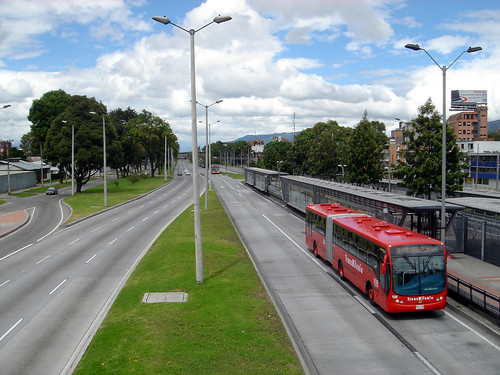Image credit: http://bc.transport-action.ca/images/TL_2007_NFI_E60LF_2533.jpg
A recent visit to Vancouver had me riding public transit nearly every day. Much of Vancouver's bus system is actually an electric trolley bus system, where normal looking buses are powered by overhead wires delivering electricity. Tim, somewhat of a growing expert in these things, told me this has a lot to do with the abundance of cheap and 'green' electricity available to Vancouver from British Columbia's massive hydroelectric resources. Which got me thinking: could this work in Winnipeg?
Winnipeg is by far the largest centre in Manitoba, a province that generates nearly every kilowatt from hydroelectric resources. Like in B.C., a government monopoly, Manitoba Hydro, owns and operates the electricity system, keeping prices low and even generating more electricity than is needed in the province. It is a low-emissions and plentiful resource. Nearly all the public transit in the city is made up of buses and receives moderately popular ridership, particularly in those parts of the population -- a significant number in Winnipeg -- with lower incomes. And as oil and gas prices continue to climb, why not take advantage of the plentiful hydro resource?
Some of it might be explained by looking at Winnipeg's public transit history. Like many cities in North America, its public transit system emerged at the end of the 19th century primarily made up of horse-drawn carriages. Spurred on by the loss of its horse fleet to a fire and the inevitable progress of technology, the city began incorporating electric streetcars (trolleys) into the system, a network that would look somewhat similar to the trolley bus system described earlier. This would eventually be scrapped in the 1960s when cost overruns and competition gave way to taxis, cars and bus service, which Winnipeg has largely relied on ever since. The infrastructure of overhead wires was removed and little remains of the old trolley system.
Winnipeg has benefited from the evolution of other cities' transit systems. Throughout the 1980s, Winnipeg snagged 50 diesel-powered buses from Calgary and Edmonton as the cities expanded their light rail systems. More recently, the city has upgraded its fleet and flirted with the expansion to diesel-electric hybrid buses. With an already large and upgraded fleet, it would seem unwise to invest immediately into an electric trolley bus system.
History aside, how viable might a system like this even be in Winnipeg? The city is painfully cold in the winters and receives considerable snowfall. The former is not as much of a problem, but snowfall has a tendency to knock off the connection between the buses and the wires above. More importantly, heavy snowfall might force buses to reroute and detours can be exceptionally long when you're dependent on an overhead wire. Electric trolley buses, too, are known as particularly advantageous in hilly cities -- like Vancouver and San Francisco -- because of the high torque in electric motors, but in a city which's highest point is a landfill, this isn't quite as much of an issue. And it ain't cheap to install a complex infrastructure of overhead cables.
The city's most recent transit developments also help to explain the situation. In an effort to significantly expand and modernize its transit system, the city has begun construction of a Bus Rapid Transit (BRT) system, connecting major corridors throughout the city. BRT systems usually have roads exclusively used by buses for high speed service, frequent service and when having to join regular traffic, transit priority signals and diamond lanes give them a boost. Anyone familiar with Ottawa or Miami's public transit would have an idea as to how this works. It is an expensive ordeal, and in a city whose budget is not outrageously affluent -- a light rail proposal fell by the wayside because of cost -- any new infrastructure, regardless of future savings, could be a real pain in the ass.
With the information above, it is sensible why the electric trolley bus system hasn't taken off in Winnipeg. But with Manitoba's electricity resources at hand, there must be ways to incorporate it into the public transit system. Sure, a full fledged system around the city might be unnecessary, costly and problematic, but the installation of trolley bus systems would make sense on straightforward and popular routes, like the express routes across the city and especially the new BRT routes. The new buses travelling those roads may very well be diesel-electric hybrids, but a simple network of cables overtop these straightforward transitways could pay off in spades in the future.


No comments:
Post a Comment